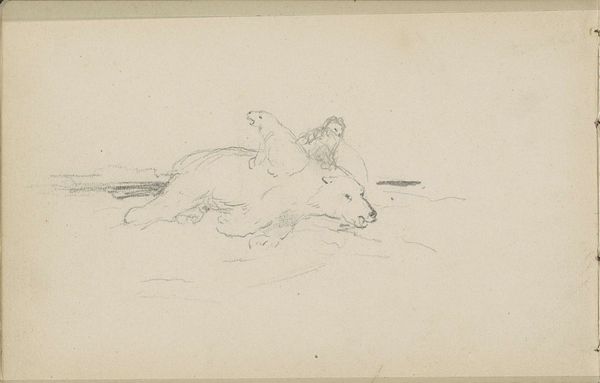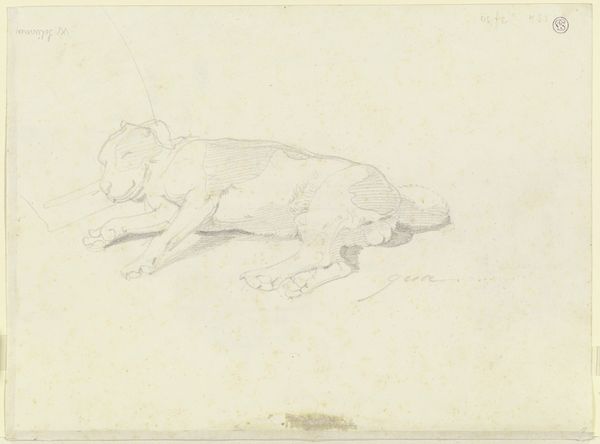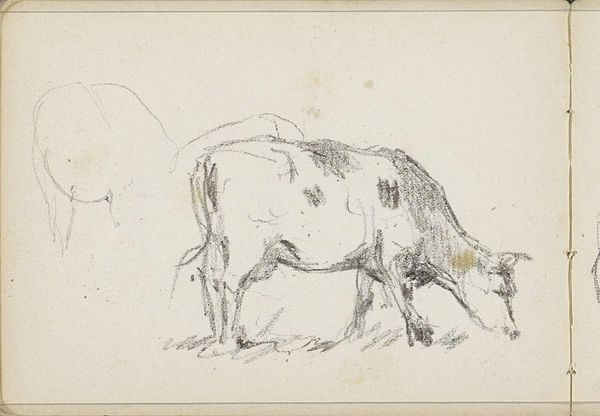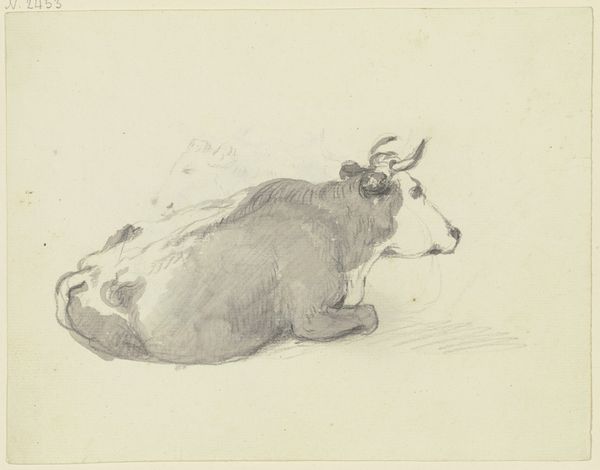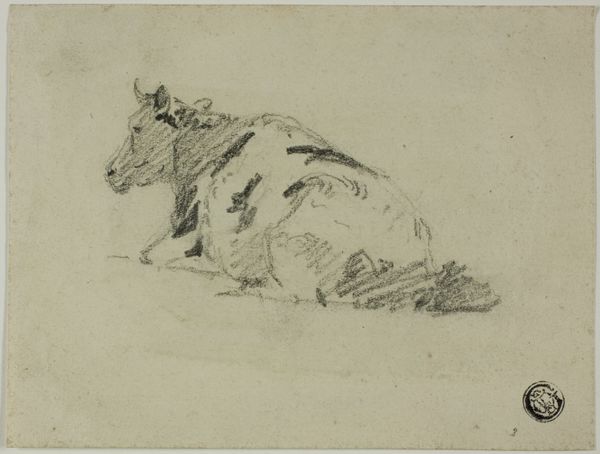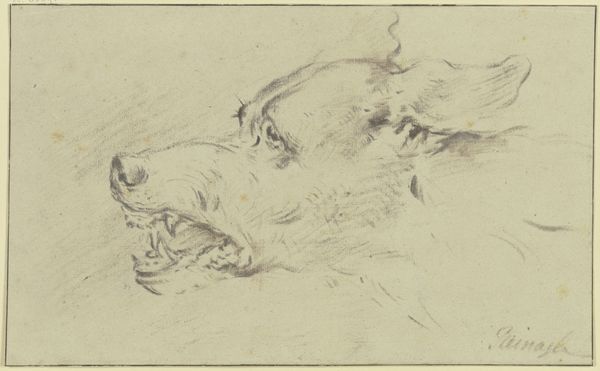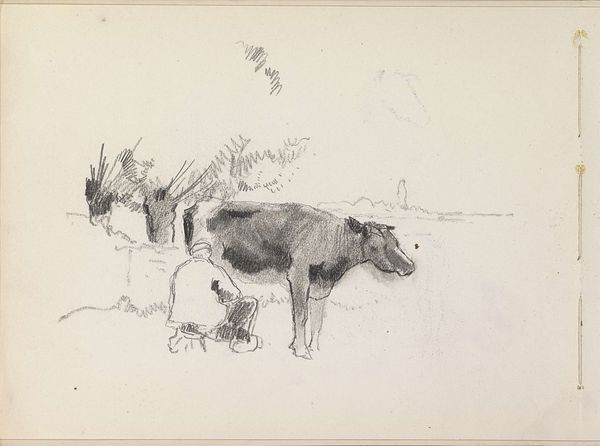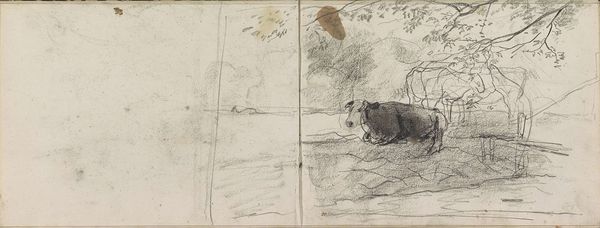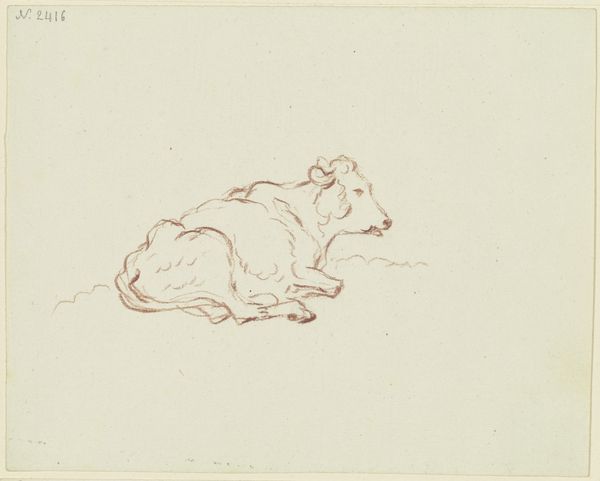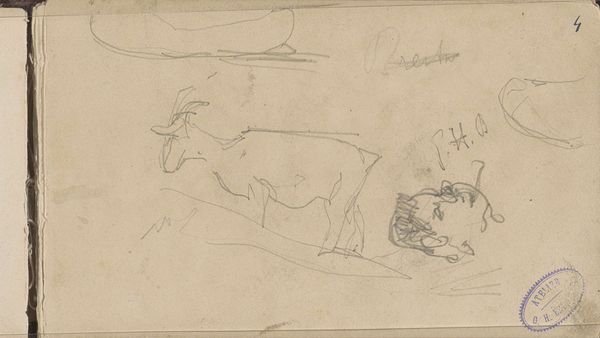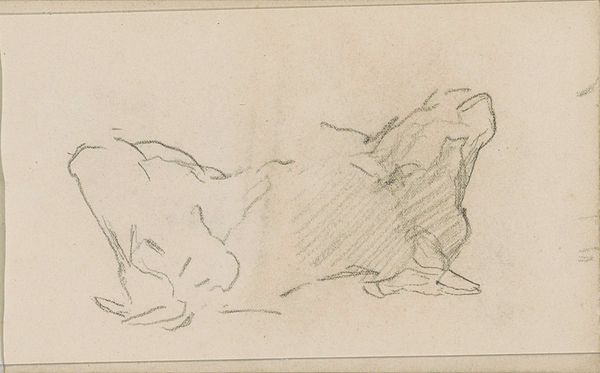
drawing, pencil
#
drawing
#
toned paper
#
dutch-golden-age
#
impressionism
#
landscape
#
pencil
#
watercolor
#
realism
Copyright: Rijks Museum: Open Domain
Editor: This drawing, "Twee liggende koeien in een weide," or "Two Reclining Cows in a Meadow," is attributed to Anton Mauve, dating sometime between 1848 and 1888. It’s done in pencil and watercolor on toned paper, and it feels so simple and unpretentious. What strikes you about this seemingly straightforward pastoral scene? Curator: What interests me is thinking about how art like this gets made during a time of such profound shifts in agricultural labor and land ownership. This work invites us to consider what the “natural” even means when it is constantly mediated through economics and power relations. Editor: Can you expand on that a little? I guess I always thought of landscapes as kind of apolitical. Curator: Well, who gets to own the land? Who gets to depict it? And for what purpose? These cows are resting, but what about the people who depend on them for labor, for sustenance, for profit? We have to consider the historical context: increasing industrialization in cities drove a romanticization of rural life. But for whom was this ideal actually accessible? Was Mauve engaging with or critiquing this shift in any way? Editor: That makes me look at it differently. The cows seemed peaceful before, but now I see them as possibly representing the kind of idealization that glosses over real struggles. Curator: Exactly. This tension between the reality of labor and the idyllic image is what makes the drawing resonate for me. What will you take away from our conversation? Editor: That even seemingly simple drawings can carry complex histories and critiques, waiting to be unpacked. Thank you.
Comments
No comments
Be the first to comment and join the conversation on the ultimate creative platform.
